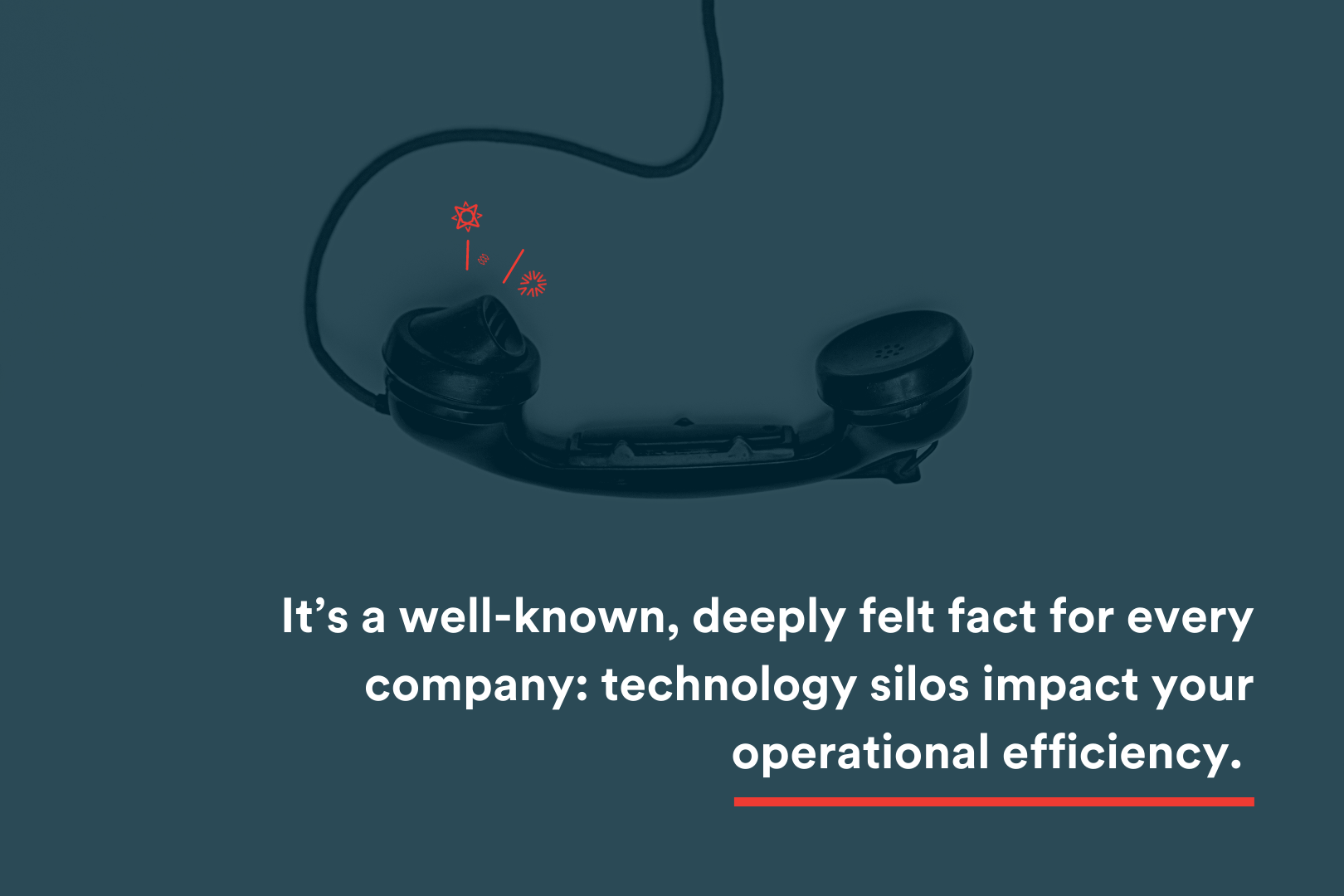Data engineering | data strategy | system integrations
It’s a well-known, deeply felt fact for every company: technology silos impact your operational efficiency.
Disparate data across a myriad of systems slows down your teams’ ability to glean actionable insights and make better decisions for your business.
Think of it like a game of telephone. As the game (or your company) grows, the more people are on the line, and the messages (or data) must pass through different places to get to where they need to go, ultimately leading to more garbled, misconstrued, or mistranslated information along the way.
But when companies invest in data-backed, systems-integrated solutions, they arm themselves with seamless insights from across their entire enterprise, leading to more optimized processes, deeper customer data, market intelligence, and more.
The proof is in the data. A recent McKinsey study found that the highest-performing companies post-pandemic have made bolder investments into their technology, including “a common source of data that serves as the single source of truth across the organization.”

The result? Stronger overall capabilities in their individual markets, and what’s more, these same organizations plan to double down on their technology as a differentiator.
Bottom line: good things happen when your systems speak the same language.
What’s the ROI of a System Integration Project?
The goal of system integration is to tear down technology silos and deliver the data where your teams need it most. That may mean merging systems to establish brand new applications, eliminating legacy systems to migrate data to modern software products, or developing new, custom solutions that can readily pull data from multiple sources.
That goal of ecosystem-wide integration enables your entire enterprise to see ROI through various avenues:
- Process optimization
- Increased efficiency
- Organizational data literacy
- More robust customer analytics and market intelligence
- Improved customer experience
What Does a System Integration Project Entail?
Wondering what a system integration engagement might entail? The truth is it entirely depends on your business needs, goals, and current infrastructure, including what legacy systems or tech stack you have in place.
System integration projects we regularly engage with at Aviture include:
- API Integrations
- Single Sign-On Authentication
- Open Data Standards
- External Integrations with Third Parties
- Payment Processing
- Enterprise Ecosystem
At Aviture, our approach is always to start by getting to know your organization inside and out, including your aspirational goals, tech debt, current IT infrastructure, and more. From there, we solve the underlying tech problems confronting your business and build a true partnership with you: one that delivers value and drives impact.

System Integration Questionnaire: How to Know When It's Time to Integrate
Despite understanding the value and ROI a system integration project can bring your business, diving headfirst into such a sweeping initiative can be daunting. As with any technology strategy, the key to success is defining your vision and mapping a plan to get there.
In order to do that, we recommend asking yourself (and your technology leadership) questions to determine your organization’s readiness:
- Do you currently have the right technology in place to support your company’s strategic initiatives?
- Are there any areas across your organization where you feel like you’re duplicating work or missing information?
- How are you currently organizing all of your data? How is it used?
- Is there anything in your company right now that could be automated or streamlined to make life easier?
If you answered ‘no’ to any of these questions, it’s worth your while to consider a system integration initiative.
Don’t let meaningful insights get lost in translation. If you’re ready to provide increased operational efficiency and meaningful insights across your entire enterprise, contact us. You deserve a partner who will understand your business from top to bottom and guide you on how to get started.


.png)

